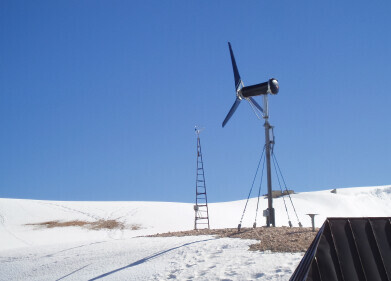Weather Monitoring
What is the El Niño-La Niña?
Mar 08 2024
In the evolving narrative of climate science and technological innovation, the phenomena of El Niño and La Niña stand out as pivotal characters, influencing global weather patterns in profound ways. These climatic anomalies, oscillating over the Pacific Ocean, weave a complex tale of atmospheric pressure, ocean temperatures, and their far-reaching effects on weather around the globe. As we delve into the scientific underpinnings and implications of El Niño and La Niña, it becomes evident that understanding these phenomena is crucial for advancing weather monitoring and prediction, fostering a more resilient society in the face of climate change.
El Niño, Spanish for "The Little Boy," refers to the warm phase of the El Niño-Southern Oscillation (ENSO), a climate pattern characterized by the warming of sea surface temperatures in the central and eastern tropical Pacific Ocean. This warming disrupts the usual wind patterns across the Pacific, leading to a cascade of global weather changes. Typically peaking during the Northern Hemisphere's winter months, El Niño episodes can trigger droughts in Australia, floods in South America, and even influence the Atlantic hurricane season.
Conversely, La Niña, or "The Little Girl," represents the cold phase of the ENSO cycle, marked by cooler-than-average sea surface temperatures in the same regions of the Pacific. La Niña's effects are somewhat mirror-opposite to those of El Niño, often associated with increased rainfall in Australia, drier conditions in South America, and a more active Pacific hurricane season. It's this intricate dance between ocean and atmosphere that underscores the importance of sophisticated weather monitoring technologies and models in predicting the impacts of these phenomena on global weather patterns.
The interplay between El Niño and La Niña has significant implications for global weather monitoring and prediction. Advanced satellite technology and ocean monitoring systems, such as the Array for Real-time Geostrophic Oceanography (ARGO) floats, play a crucial role in detecting the early signs of these phenomena. By measuring sea surface temperatures and subsurface ocean conditions, scientists can provide early warnings of El Niño and La Niña events, allowing for more accurate weather forecasts and the implementation of pre-emptive measures to mitigate their effects.
Furthermore, climate models have become increasingly sophisticated, incorporating vast datasets to simulate the potential impacts of El Niño and La Niña on global weather patterns. These models are essential tools for researchers and policymakers alike, offering insights into future climate scenarios and informing strategies for climate resilience and adaptation.
Yet, the study of El Niño and La Niña is not without its challenges. The variability and complexity of these phenomena, coupled with their interactions with other climate patterns, make prediction difficult. Recent research, however, is focused on unravelling the mysteries of ENSO's irregularity and intensity, aiming to improve prediction accuracy and extend forecast lead times. This endeavour is critical, as the ability to anticipate El Niño and La Niña events with greater precision can significantly enhance our capacity to prepare for their impacts, from agriculture and water management to disaster preparedness and public health.
As we confront the realities of a warming world, the significance of El Niño and La Niña in the broader context of climate change becomes increasingly apparent. These phenomena do not act in isolation but are influenced by and contribute to the global climate system's dynamics. Understanding their role and potential changes in their behaviour under different climate change scenarios is paramount for developing effective strategies to mitigate and adapt to the impacts of climate change.
So, El Niño and La Niña are more than mere fluctuations in ocean temperatures; they are integral components of our planet's climate system, with far-reaching implications for weather patterns, ecosystems, and human societies. Through the lens of scientific inquiry and technological advancement, we continue to enhance our understanding of these phenomena, striving for a future where the complexities of climate can be navigated with precision and foresight. As we chart this course, the commitment to continuous research and innovation remains our beacon, guiding us toward a more resilient and sustainable world.
Digital Edition
AET 28.2 April/May 2024
May 2024
Business News - Teledyne Marine expands with the acquisition of Valeport - Signal partners with gas analysis experts in Korea Air Monitoring - Continuous Fine Particulate Emission Monitor...
View all digital editions
Events
Jul 30 2024 Jakarta, Indonesia
China Energy Summit & Exhibition
Jul 31 2024 Beijing, China
2024 Beijing International Coal & Mining Exhibition
Aug 07 2024 Beijing, China
IWA World Water Congress & Exhibition
Aug 11 2024 Toronto, Canada
Aug 25 2024 Stockholm, Sweden and online










.jpg)








